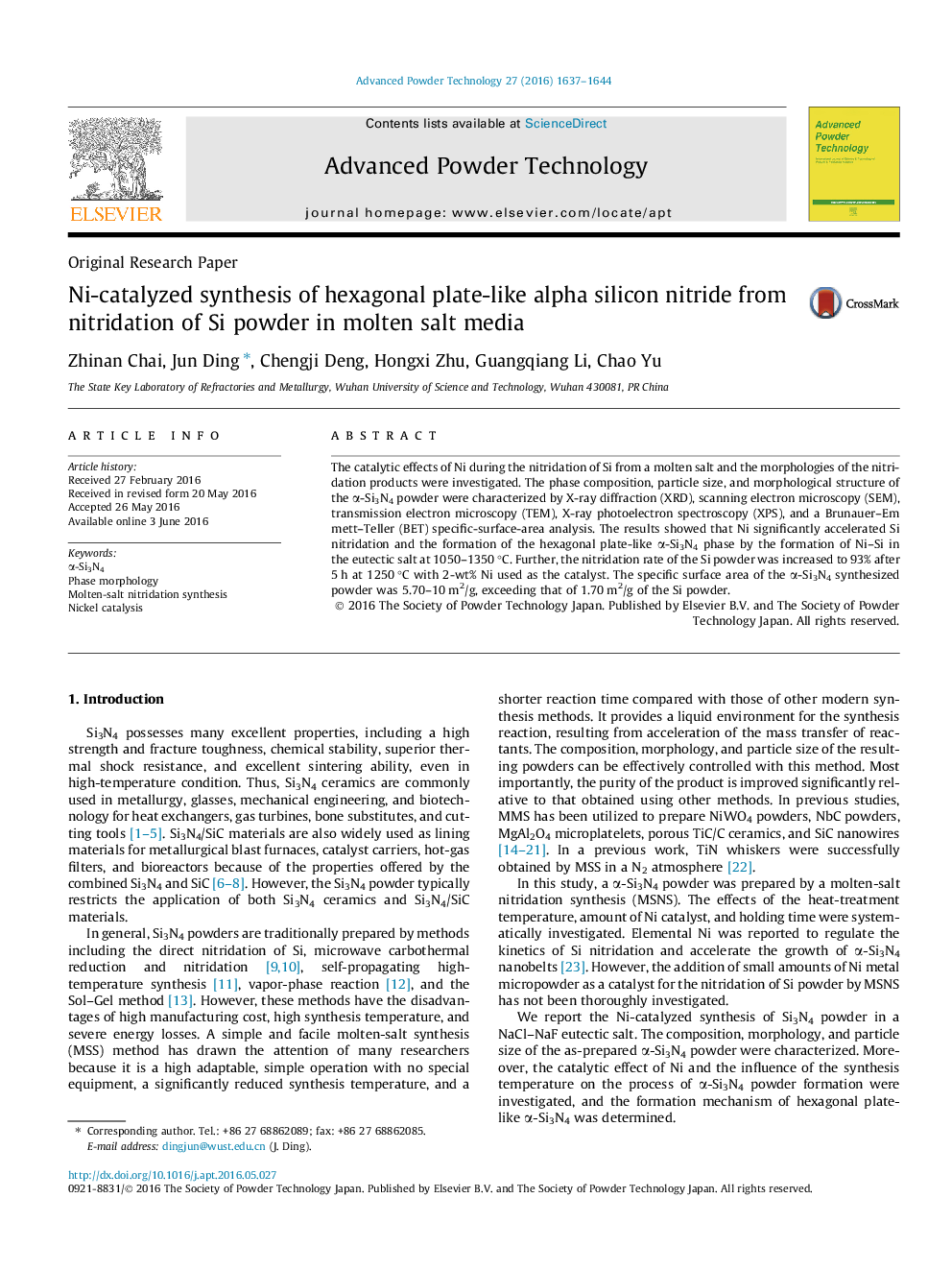| کد مقاله | کد نشریه | سال انتشار | مقاله انگلیسی | نسخه تمام متن |
|---|---|---|---|---|
| 143956 | 438916 | 2016 | 8 صفحه PDF | دانلود رایگان |
• Si3N4 was produced by Ni-catalyzed molten salt nitridation synthesis.
• Parameters of temperature, holding time, and Ni concentration were investigated.
• Synthesis of α-Si3N4 is optimal at 1350 °C for 5 h with 2 wt% Ni.
• Signs of dissolution–precipitation synthesis mechanism are observed.
The catalytic effects of Ni during the nitridation of Si from a molten salt and the morphologies of the nitridation products were investigated. The phase composition, particle size, and morphological structure of the α-Si3N4 powder were characterized by X-ray diffraction (XRD), scanning electron microscopy (SEM), transmission electron microscopy (TEM), X-ray photoelectron spectroscopy (XPS), and a Brunauer–Emmett–Teller (BET) specific-surface-area analysis. The results showed that Ni significantly accelerated Si nitridation and the formation of the hexagonal plate-like α-Si3N4 phase by the formation of Ni–Si in the eutectic salt at 1050–1350 °C. Further, the nitridation rate of the Si powder was increased to 93% after 5 h at 1250 °C with 2-wt% Ni used as the catalyst. The specific surface area of the α-Si3N4 synthesized powder was 5.70–10 m2/g, exceeding that of 1.70 m2/g of the Si powder.
Figure optionsDownload as PowerPoint slide
Journal: Advanced Powder Technology - Volume 27, Issue 4, July 2016, Pages 1637–1644
